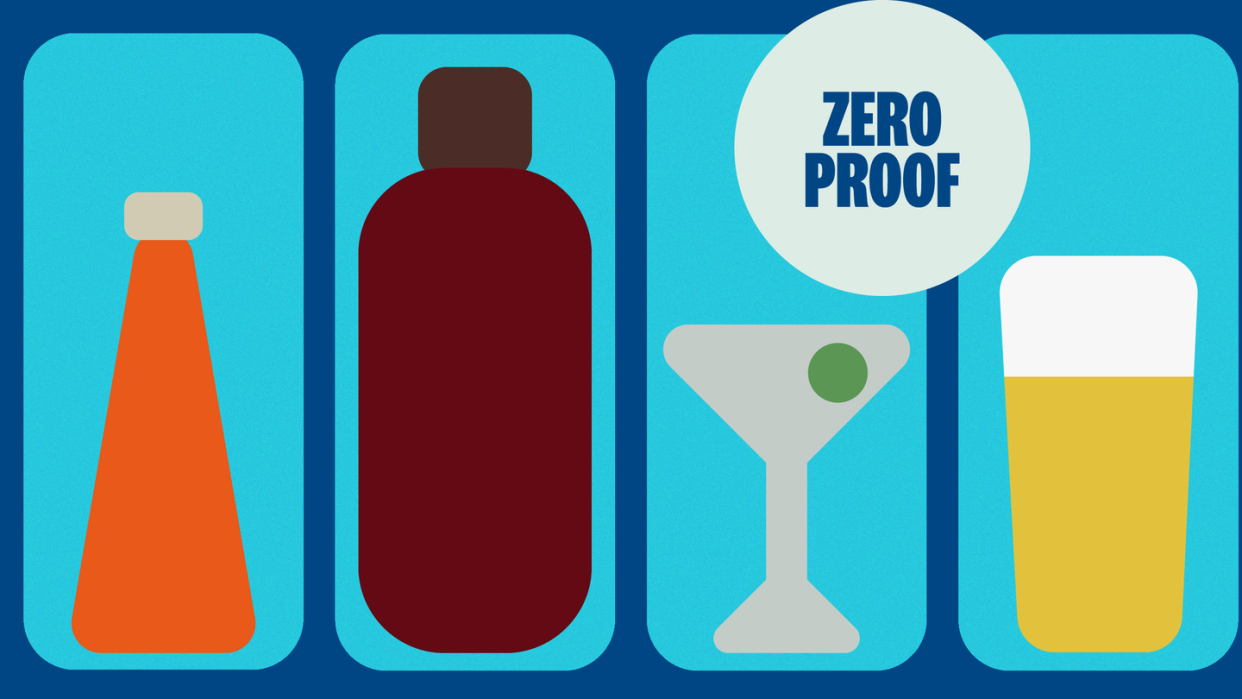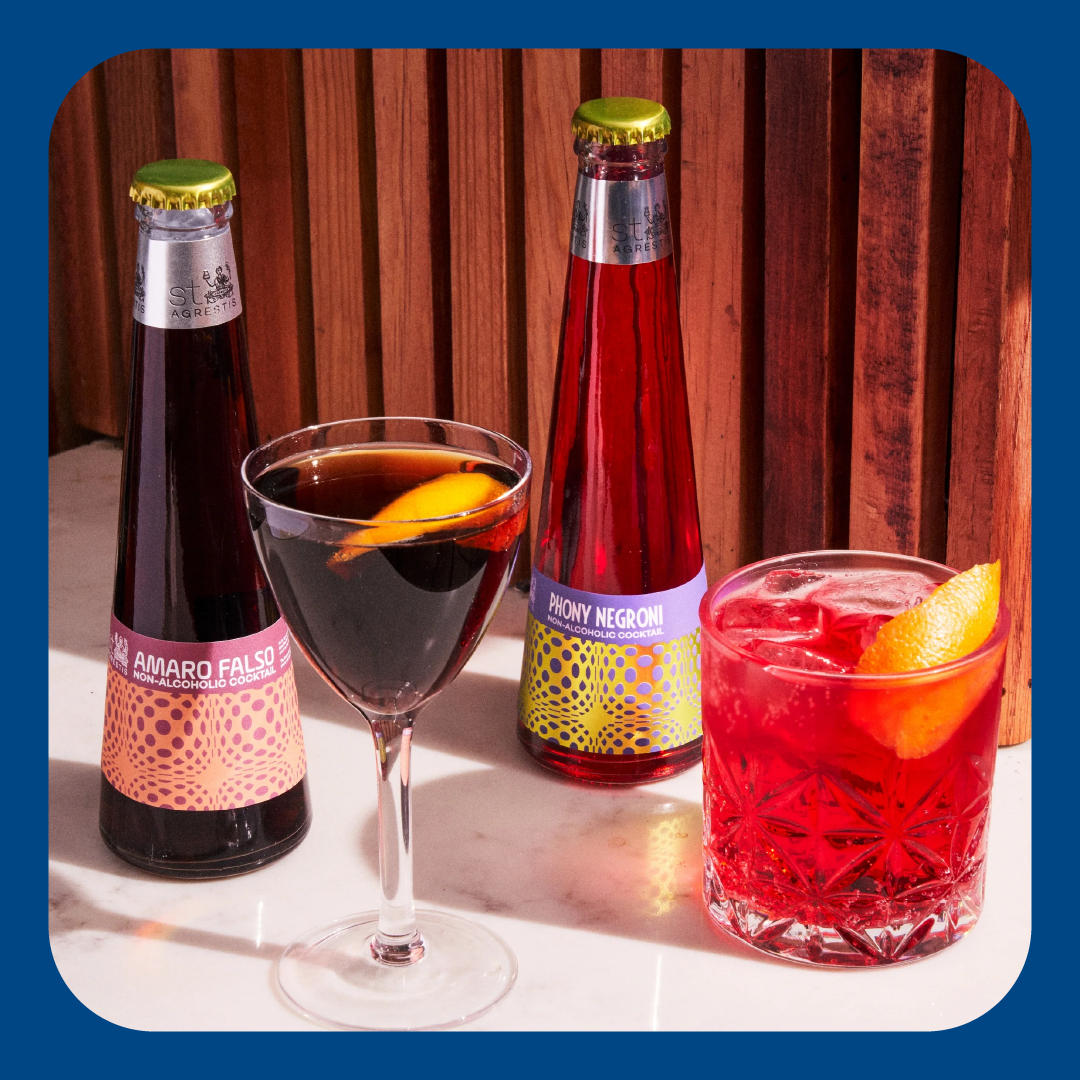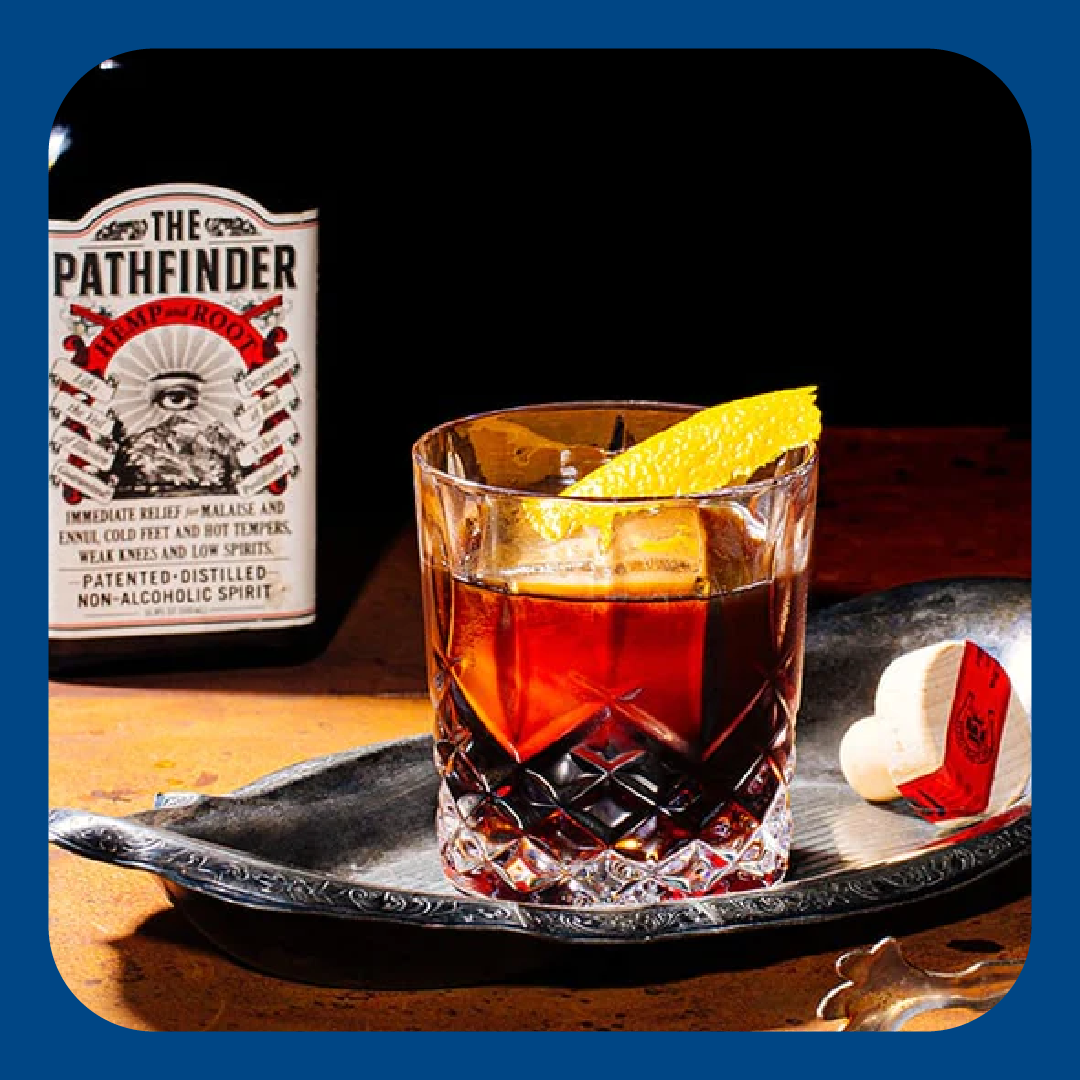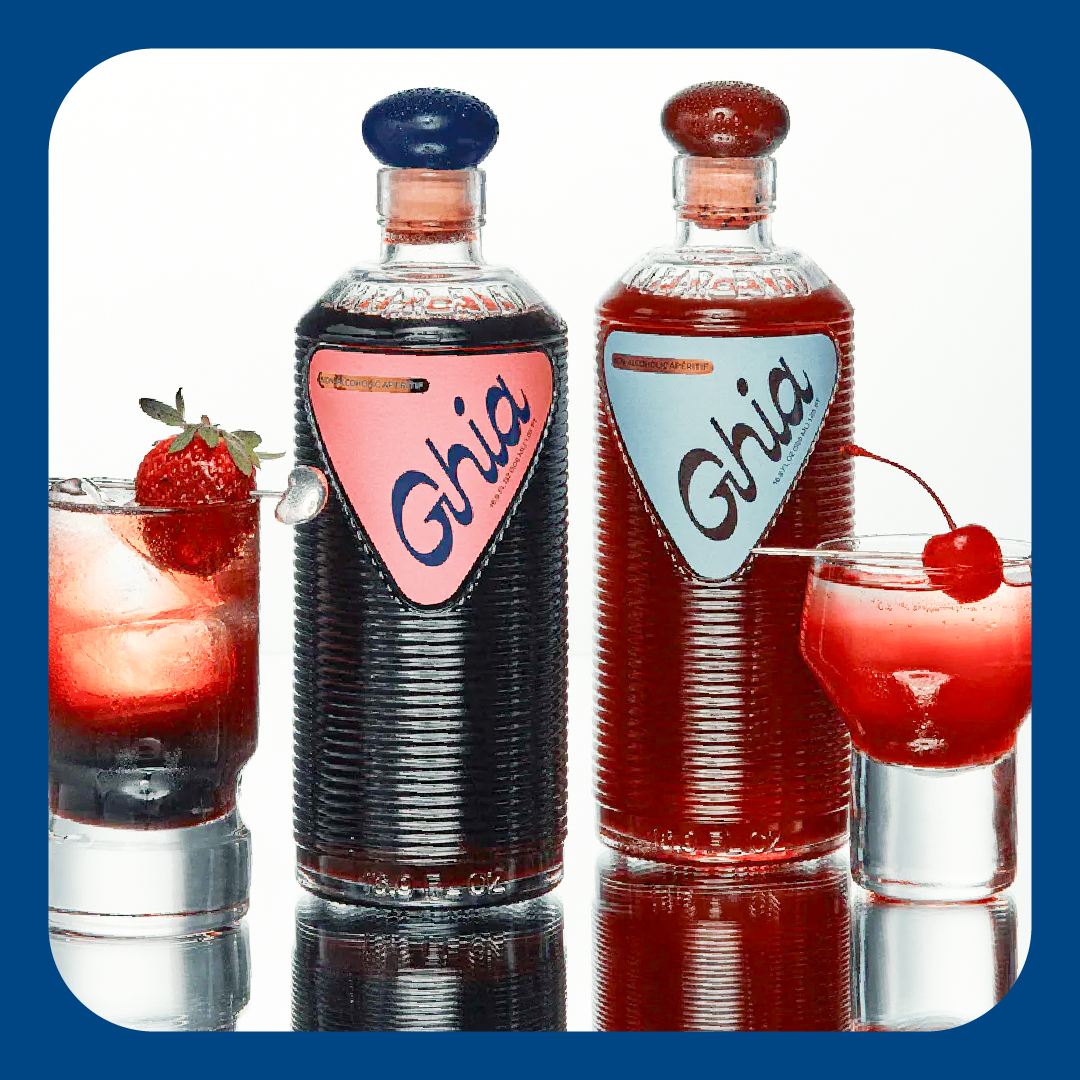Everything You Know About Going Alcohol Free Is Wrong

"Hearst Magazines and Yahoo may earn commission or revenue on some items through these links."
Whether you observe Dry January or dabble in non-alcoholic beverages year round, you’ve probably noticed that mocktails have come a long way. Soda and haphazard combinations of fruit juice were once the standard—and even then, they came with their fair share of stigma. But if the explosive rise of no- and low-alcohol beverages is any indication, it has never been more exciting to not drink.
According to Yelp, interest in mocktails has skyrocketed by a whopping 95 percent in the past year alone. A Gallup poll reports that younger Americans in particular are less likely to drink alcohol than other generations. A consumer study found that over a third of American adults wanted to reduce their alcohol consumption in 2023.
Gallup found that the reasons behind alcohol abstention can vary significantly, but the leading rationale is simple: people simply don’t want to drink. Nearly a quarter of respondents cited a lack of desire, while only 13 percent referenced a past bad experience with alcohol.
For so long, much of the conversation around non-alcoholic beverages was centered around the latter. Opting for a mocktail would implicitly signal hushed tones, touchy subjects, and secret horror stories. The decision to not drink has long been believed to be a choice made under duress or out of necessity.

Mocktails have been fraught with cultural stigma and secrecy, which severely stunted the opportunities for creativity. For Joshua Gandee, bartender, beverage consultant, and host of the podcast No Proof, the choice to stop drinking in 2017 initially meant limiting himself to an already limited beverage category.
“When I first saw mocktails, it was actual mimicry,” he says. “The only people that were ordering drinks without alcohol typically were people who didn't want to have a conversation, or didn't want to have somebody asking about it. So they were just ordering things that looked like what they used to drink.”
But over the past several years, Gandee has felt the discourse shift. Now, entering the third season of No Proof, his conversations surrounding sobriety are increasingly open, inclusive, and uplifting.
"Even though I didn't have a disaster story of my own when I decided to stop drinking, I still found a lot of them. That's not to say that people still aren't facing battles in the decision to stop drinking. But a lot more of the stories than before that are coming in are people finding the decision to remove alcohol from a very positive place," he says. "I think less and less people feel like they need to hide that decision or to hide that conversation."
The choice to abstain from alcohol faces less scrutiny than ever, both in and out of the hospitality industry. With fewer limits and barriers to entry, demand has been growing, and the market, clearly, has responded.
“Brands can sometimes be the last to know about those things," says Gandee. "And it's finally gotten to a point where they are paying attention.”

Consumers are no longer limited to watered-down non-alcoholic beer and a handful of booze-free wines. Industry giant Diageo has expanded their offerings to include non-alcoholic versions of Guinness, Tanqueray, and Captain Morgan. They also acquired a majority stake in the startup brand Seedlip, which uses distillation to make non-alcoholic spirits.
Smaller brands like Brooklyn-based St. Agrestis have thrown their money behind their NA offerings, releasing four new alcohol-free beverages in just the last two years. Businesses dedicated to selling exclusively zero-proof products have popped up all over the country.
Nick Bodkins, founder of non-alcoholic spirits shop Boisson, sees his business as a go-to-market platform for emerging non-alcoholic spirits brands. Since the first location opened in 2021, Boisson now has eight locations and serves hundreds of thousands of customers. Part of what makes Boisson unique from other spirits shops—besides the lack of alcohol—is their experiential approach.
At Boisson, they don't necessarily sell products based on how well they resemble their alcoholic counterpoint. "We ask, 'What is it exactly that you're actually drinking for? Who were you drinking with?' And that changes that conversation pretty significantly," Bodkins says. Shopping for non-alcoholic spirits is no longer a trade off—it's an entirely new world of possibilities.
And the market for dedicated non-alcoholic spirit brands has grown significantly, too. Booze-free beer brand Athletic Brewing Company reported a revenue growth of over 13,000 percent between 2018 and 2021—then nabbed a $50 million investment from Keurig Dr Pepper in late 2022. Ghia founder Melanie Masarin report that her brand has grown 77 percent in 2023. Even celebrities like Blake Lively and Katy Perry have even thrown their hat in the NA ring with mocktails of their own.
“This truly is the wild west: for branding, for flavor combinations, for creativity, for creation, and really just saying, 'this is something that we wanted to create because we like the way that it tastes,'" Gandee says.
The new frontier of non-alcoholic spirits has also encouraged restaurants and bars to develop their own mocktail programs in earnest. Some of Gandee's work includes designing mocktail menus alongside Alex Jump, bartender and cofounder of Focus on Health. The organization offers health and wellness training within the hospitality industry, including education about the no and low alcohol movement.
“The beautiful thing about no and low [ABV beverages] right now is that there's no limit to what you can make,” Jump says. “You can work within any constraints.”

While Jump thinks the industry is still fairly green and could benefit from a stronger educational foundation, the enthusiasm for non-alcoholic beverage programs is inspiring more creativity than ever. Putting effort and intention into a mocktail menu, rather than treating it as an afterthought, is part of what fuels consumer demand.
“We should be applying the same sort of storytelling when creating [a non-alcoholic cocktail],” Gandee says. “If you’re not excited when creating it, how can you expect your staff to be excited about it and convey that to the guests?”
Juliette Dottle, sommelier and beverage director of Nōksu in New York City, takes inspiration from the restaurant’s tasting menu to curate her non-alcoholic beverage program. One drink, called the Moon Beam, uses fermented koji water from the kitchen to add a delicate savory note.
At Scarlet Lounge, The White Lotus star Michael Imperioli’s newly opened bar in Manhattan, the non-alcoholic drinks draw inspiration from the moody, Art Deco-inspired atmosphere. The Fleur de Lis, created by Scarlet’s beverage director Matt Burkhardt, evokes the effervescence and excitement of the Roaring 20s with the addition of a non-alcoholic rosé. “It gives guests very much that same experience that they'd be getting if they're ordering like a French 75,” Burkhardt says. Guests can also opt for a selection of alcohol-free wines and beers, like a Belgian blonde beloved by Imperioli himself.
Early in his career, when customers would ask Burkhardt for a mocktail, his options were limited to “pineapple juice and grenadine.” And now, as more diners seek out restaurants based on the quality of their NA offerings, menus are evolving accordingly.
“The biggest thing I’ve seen is people taking the same approach that they use with regular cocktails towards non-alcoholic cocktails,” Dottle says. “People have higher expectations now.”
And for those in the industry, the evolution is only just beginning. "I think we’ll continue to see expanded creativity, people being willing to think outside the box and what it means for their [bar] program and what it means for them as a consumer," Jump says.
Dry January may be limited to just one month. But if the current mocktail industry is any indication, it seems like NA is here to stay.
You Might Also Like






